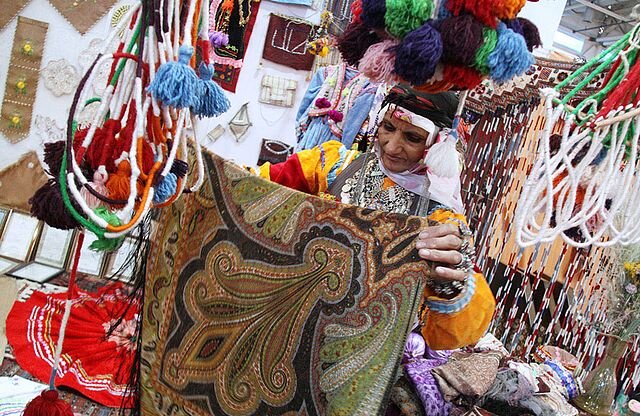TEHRAN – The development of tourism cooperatives has increased employment for women and villagers, the deputy minister of cooperatives, labor, and social welfare has said.
There are 3,299 cooperatives in the field of cultural heritage, handicrafts, and tourism in the whole country, IRIB quoted Mehdi Maskani as saying on Thursday.
Of these cooperatives, 62 percent are run by women, and if this sector can be developed, more jobs will be created for the target community, namely women and villagers, he highlighted.
Rural tourism, agritourism, religious tourism, and ecotourism are alternatives or complementary economic activities that could further stimulate rural development. Pointing out that 115 cooperatives are created annually in the field of handicrafts, he stated that Sistan-Baluchestan, Fars, and Kerman have the highest and Qom, Zanjan and Qazvin have the lowest rate of handicraft cooperatives in the country.
He went on to note that a total budget of 20 trillion rials (nearly $76 million) has been allocated for cooperatives in line with the goal of developing the national economy, 10 percent of which can be allocated to the rural handicrafts sector.
There are 39 cities in the world that have handicrafts, of which Iran’s share is 8 cities, he further said.
Many efforts have been made over the past couple of years by the government to support villagers and slow down the trend of migration from rural areas to cities.
Rural tourism, agritourism, religious tourism, and ecotourism are alternatives or complementary economic activities that could further stimulate rural development while decreasing rural community dependency on one main economic sector (agriculture, forestry, energy, or mining).
Cooperatives have been acknowledged as associations and enterprises through which citizens can effectively improve their lives while contributing to the economic, social, cultural, and political advancement of their community and nation.
Cooperatives also foster external equality. As they are community-based, they are committed to the sustainable development of their communities - environmentally, socially, and economically. This commitment can be seen in their support for community activities, local sourcing of supplies to benefit the local economy, and decision-making that considers the impact on their communities.
Despite their local community focus, co-operatives also aspire to bring the benefits of their economic and social model to all people in the world.


No comments:
Post a Comment